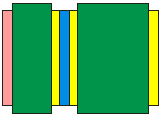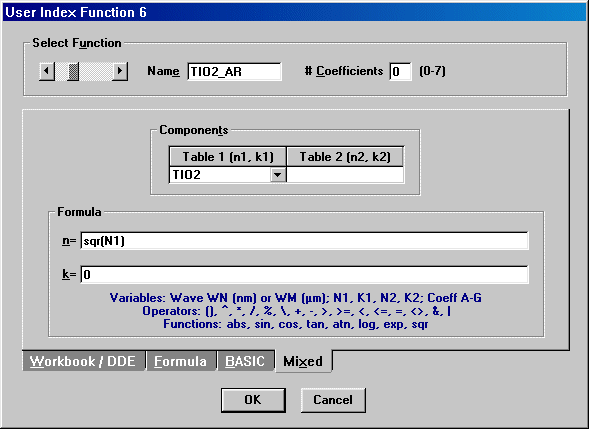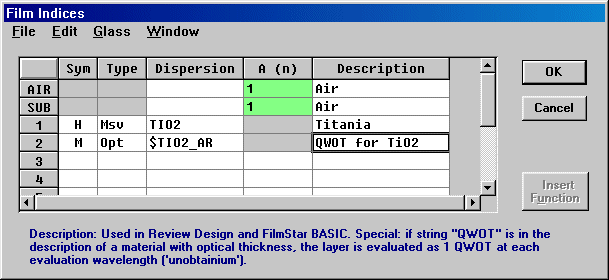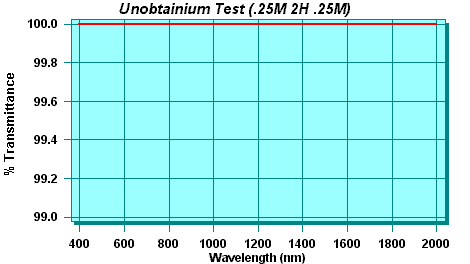Technical Issues - AR at all wavelengths (unobtainium)
Suppose we need a layer of unobtainium (pink layer in diagram). The first task is to set up an index function or table which provides an index equal to the square root of index n of the massive (green) layer. One way to accomplish this is to use a Mixed index function as shown below:
The function name is then specified in the Film Indices editor. But how do we tell DESIGN to automatically convert unobtainium layers to a quarter wave at each evaluation wavelength? This is accomplished by including the string QWOT (not case sensitive) in the Description column as shown below.
To make this easier to remember, the Film Indices editor now includes a help caption at the bottom which changes as the highlight is moved between columns. (The caption may be turned off in the File menu.) To test that everything works as expected, try a design with unobtainium on both sides (.25M 2H .25M); you should results as in the graph below:
Note that all M layers are automatically converted to .25M (or 1M if QWOT=1 in Setup Parameters). Finally, it is not necessary to use a dispersive index function or table. If the massive layer can be approximated by a constant, you need only enter its square root for the unobtainium index. It is possible to calculate total absorptance in designs with massive layers, but not absorptance in specific layers. One way around this is to treat massive layers as thin films (2mm glass represented as 2000000G, etc.) and average out the fringes with BASIC Sub MonoLight(). Be sure that the calculation interval (>0 for even spacing) is much smaller than the bandwidth. The following program plots the original spectrum and overlays it with the averaged one.
|
Copyright © 2023 FTG Software Associates
Last updated on
January 31, 2023



